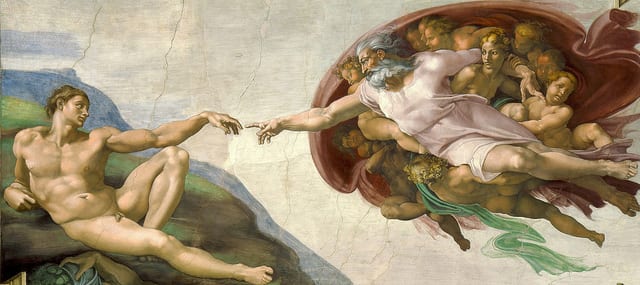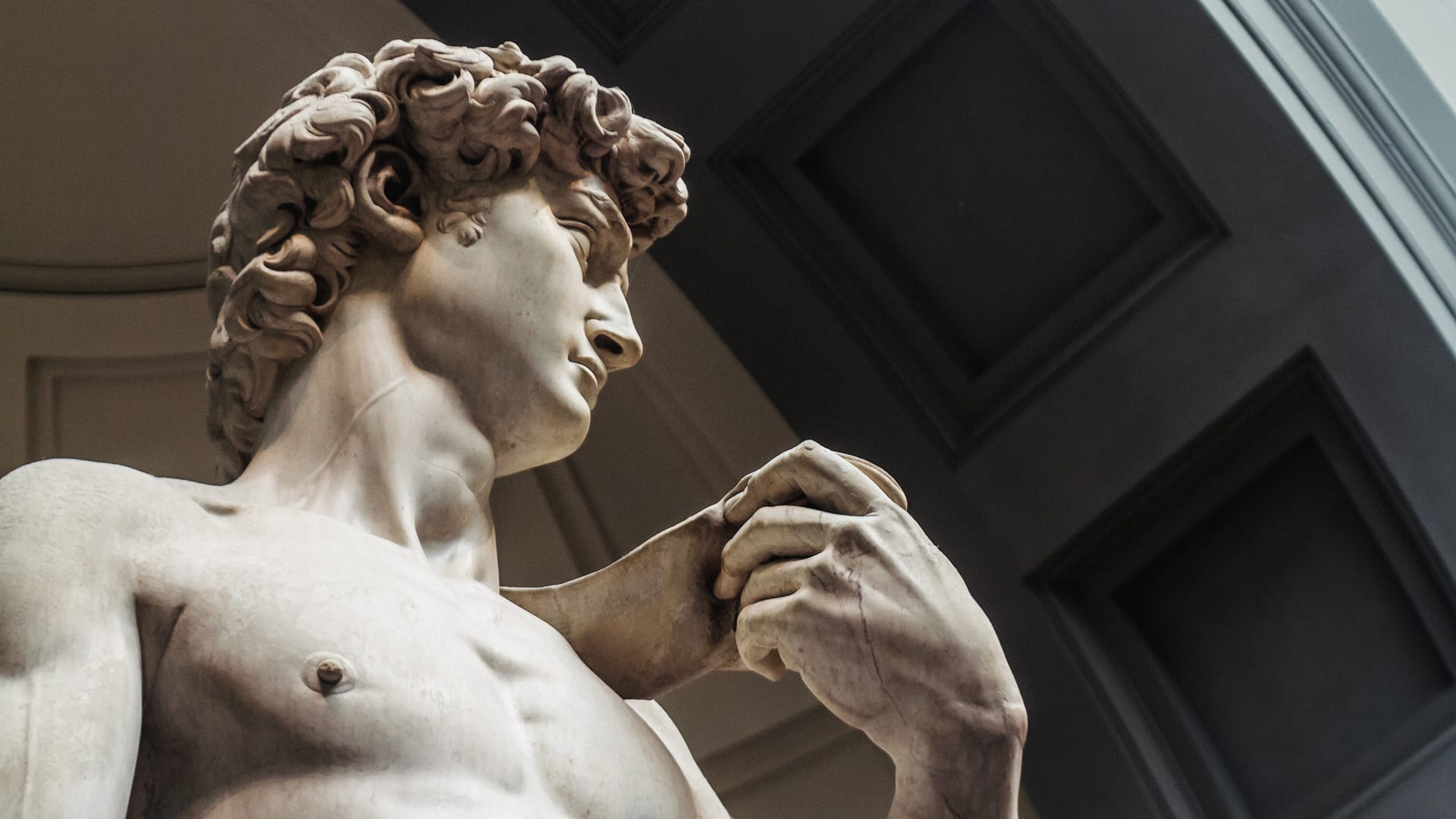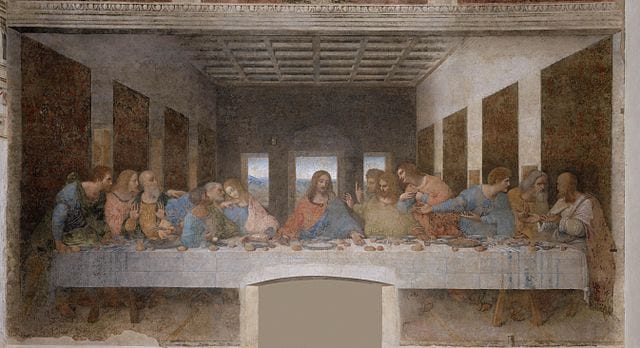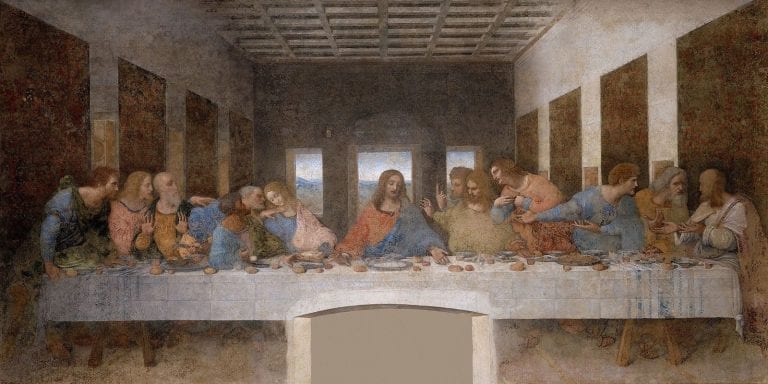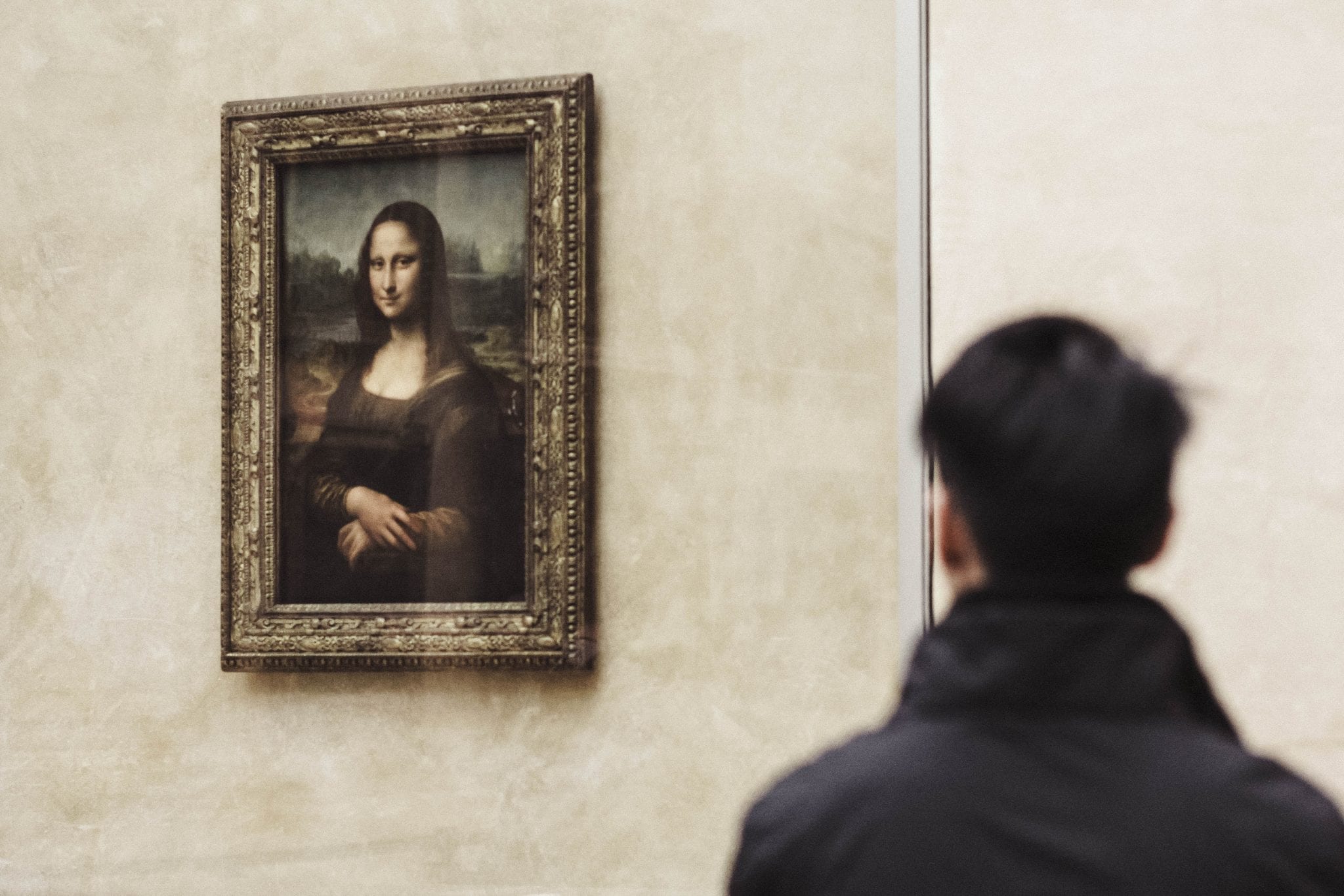
Every day, tens of thousands of people wait in line at the Louvre for a moment with the Mona Lisa, Da Vinci’s famous masterpiece. They commit her iconic smile to memory, save it to camera roll or share it on social media. However, in summer 2019 the world´s most famous painting was at the epicentre of a publicity storm, Why? This was due to the Louvre moving Mona Lisa from her home in the Salle des États into the Galerie Médicis.
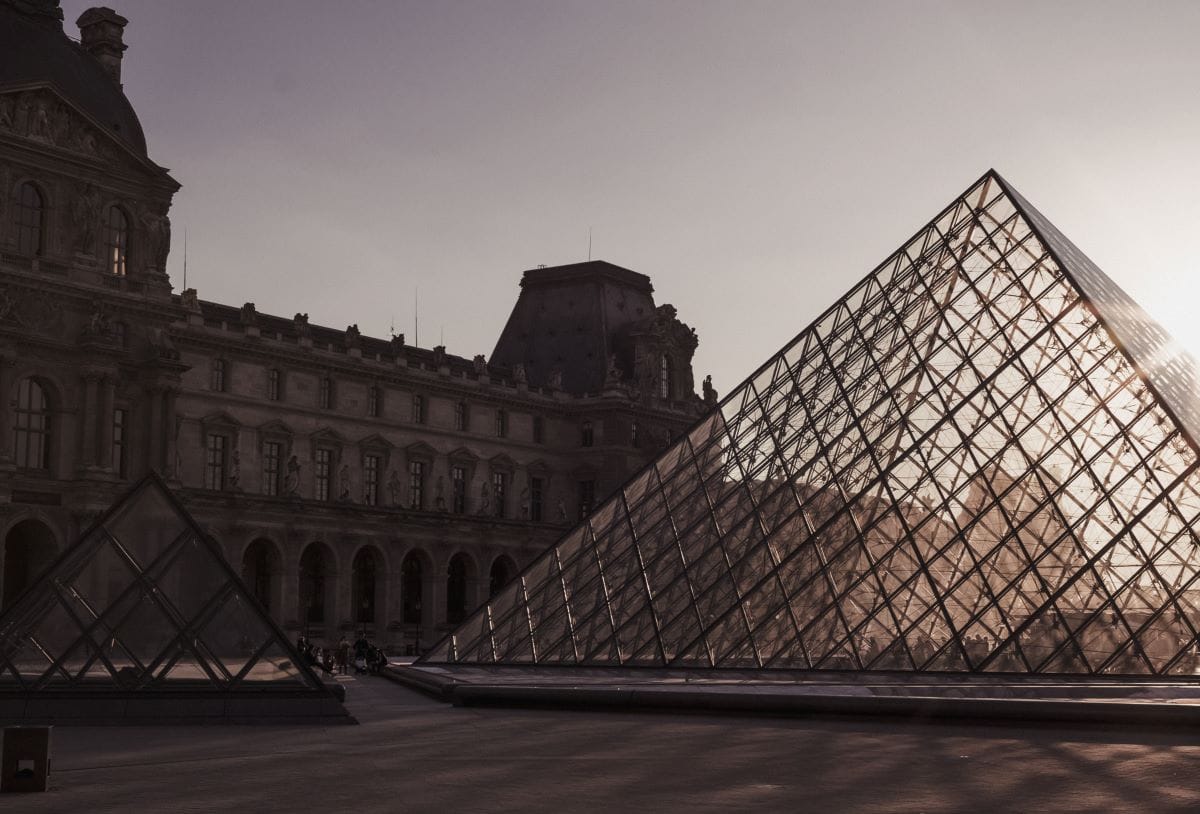
The glass pyramid that sits about the Louvre Museum.
Table of Contents
ToggleThe Story Behind Moving Mona Lisa
So, why was The Mona Lisa moved? The reason? Simply to facilitate the renovation of the Salle des États, ahead of an exhibition in honour of the 500th anniversary of Da Vinci’s death later that year. But, this simple change of location, which caused confusion and controversy isn’t the first time the painting’s relocation has caused a bit of a ruckus…
In fact, the world’s most enigmatic smile belies the drama which has surrounded Mona Lisa for centuries. Herein lies the tale of the interesting dispute over ownership, which has played out between two nations for years.
Who owns the Mona Lisa?
From a legal standpoint, the answer to that question is the French government. But from a figurative one? Well, that actually depends on who you ask, and on which side of the French/Italian border they might stand.
Mona Lisa´s History and Heritage
It’s well known that the Mona Lisa is understood to be a portrait of an Italian woman named Lisa Gherardini, which was commissioned by her husband Francesco del Giocondo during the Italian Renaissance.
What is perhaps lesser known is that Da Vinci, who was born in Italy but died in France 67 years later, supposedly gifted the painting to his friend King Francois I. The King initially housed the portrait in the Palace of Versailles before it was moved to the Louvre. And therein lies the cultural conundrum.
Read more: 9 Facts About the Life of Leonardo Da Vinci They Didn’t Teach You in School
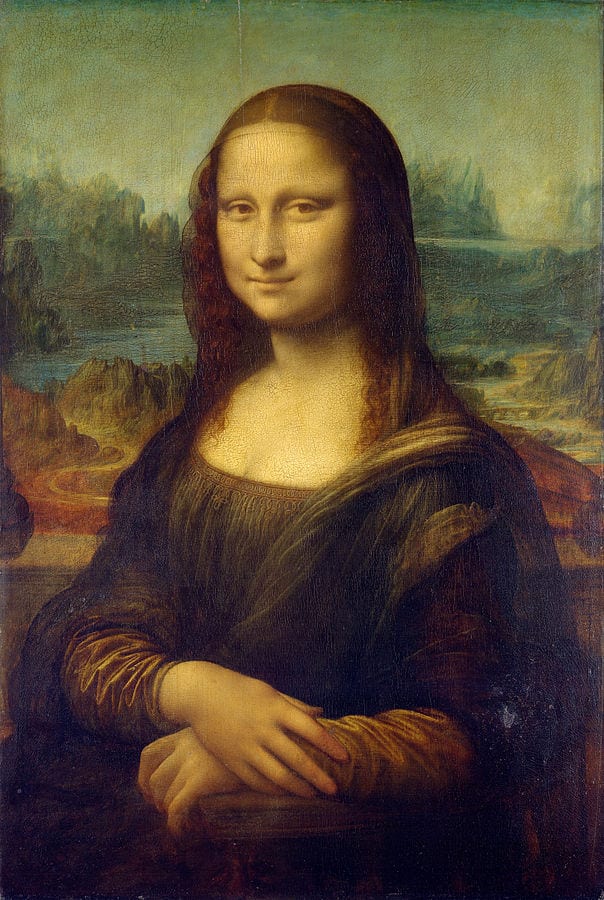
Photo via Wikicommons
Many assert that this confirms France’s ownership – with the Louvre stating that Da Vinci, in fact, sold the painting to the king. Meanwhile, those who share a birthplace with Da Vinci argue that the Mona Lisa is an undeniable part of Italian history – a portrait created by an Italian, of an Italian, for an Italian.
Considering the global realm to which the painting has been elevated, the issue of heritage may seem a trivial one, but it’s worth remembering that it actually acted as the motivation for one of the most infamous art robberies of the 20th century.
The Mona Lisa Heist
In August 1911, the half-length portrait was stolen from the Louvre by an Italian man named Vincenzo Peruggio. After concealing the painting in his Parisian home for two years, it is understood that the former Louvre worker returned to Italy with it, approached a gallery in Florence, and promptly blew his own cover.
After two years of police work and considerable international publicity, the hunt for the painting was over. Brought before the court, Peruggio reportedly argued that the motivation for his crime was patriotic, and he subsequently served seven months of a 12-month sentence.
Over 100 years on from Peruggio’s ‘crime of patriotism’, the debate over who can ‘claim’ ownership of the painting continues to rumble on.
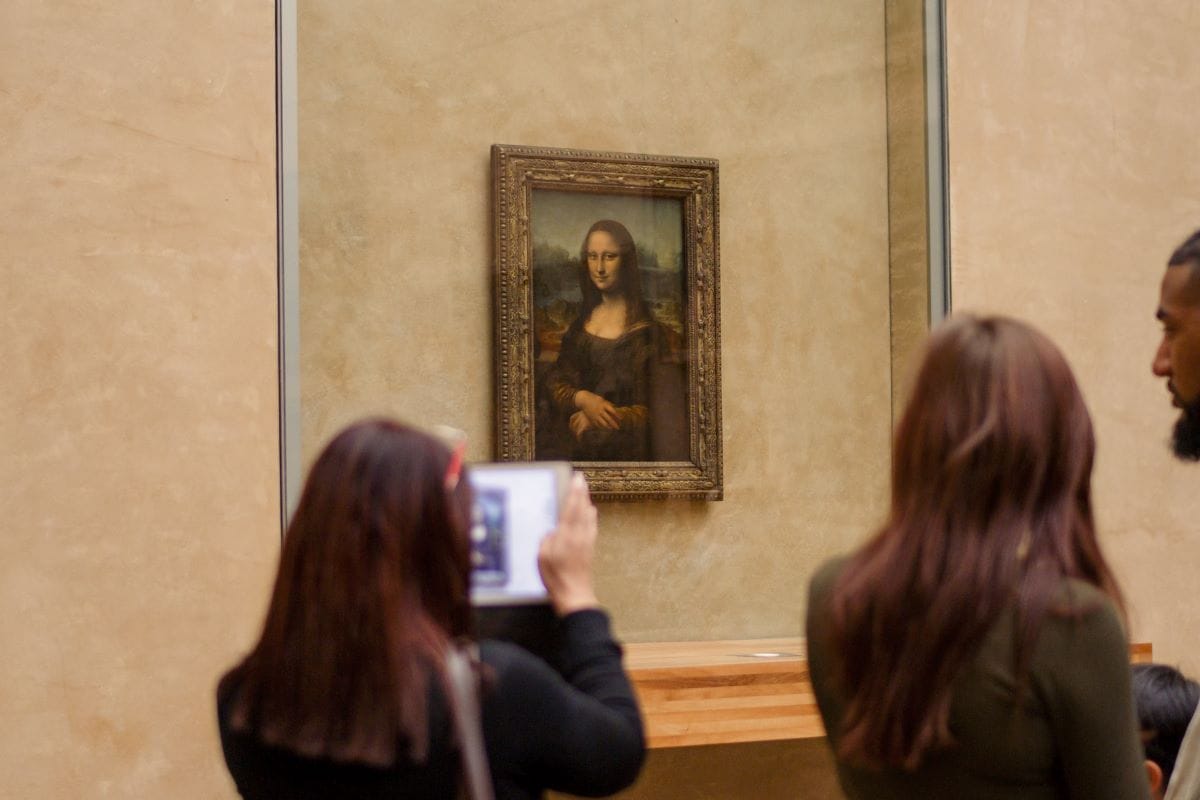
Around 20 to 30,000 people go to see the Mona Lisa every day!
From Courtrooms to Cultural Campaigns
While the original dispute may have played out in a courtroom, today’s manifestation of the conflict comes in the form of cultural campaigns and online spats.
In 2011, The Telegraph reported on art historian Silvano Vinceti’s efforts to raise 100,000 signatures by 2013 in support of the return of the painting to Italy. The campaign was dismissed by Vincent Pomarede of the Louvre who argued that ‘any attempt to move the painting would cause incalculable damage.’
One year later, a petition containing more than 150,000 signatures called on the Louvre to return the Mona Lisa to Florence, with the aim of reinstating the painting in the Uffizi Gallery. The National Committee for Historical, Cultural and Environmental Heritage made a formal – but ultimately unsuccessful – request to France’s Culture Minister at the time.
And it hasn’t stopped there.
From the world of celebrity to the World Cup, it seems anything and everything can act as a catalyst from which to ignite discussion around Mona Lisa’s heritage.
Indeed, during a promotional tour in 2014 for his film The Monuments Men, George Clooney is said to have weighed in on the subject of ownership. According to reports published at the time, the actor supposedly encouraged France to return the portrait to Italy, ultimately drawing further attention to the friction which exists between the two nations on the issue.
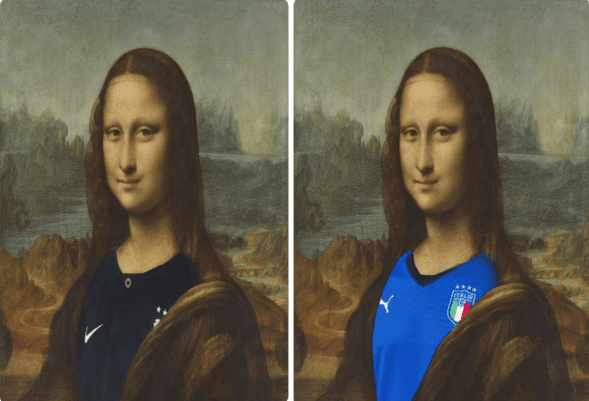
And the bone of contention made headlines again just last year when the Louvre tweeted a photoshopped image of the Mona Lisa wearing the French football strip following France’s World Cup win in July 2018.
Unsurprisingly, the move went down like a lead balloon among Italian fans, who took to Twitter to rage against the museum. Naturally, it wasn’t long before alternative versions of the image began circulating online, with irate Italians carefully doctoring the painting to illustrate Mona Lisa’s supposed support of the Italian football team.
Where Is Mona Lisa´s True Home?
Courtrooms, campaigns, and Clooney aside, the long-standing dispute and contention was stirred up again by the 2019 relocation, and will no doubt continue as the heritage issue still runs deep.
So, is the Mona Lisa now woven into the fabric of French national heritage? Or is she inextricably linked with Italian culture? Which country can lay claim? The one in which she was created or the one in which she resides? Where do you think her true home is?
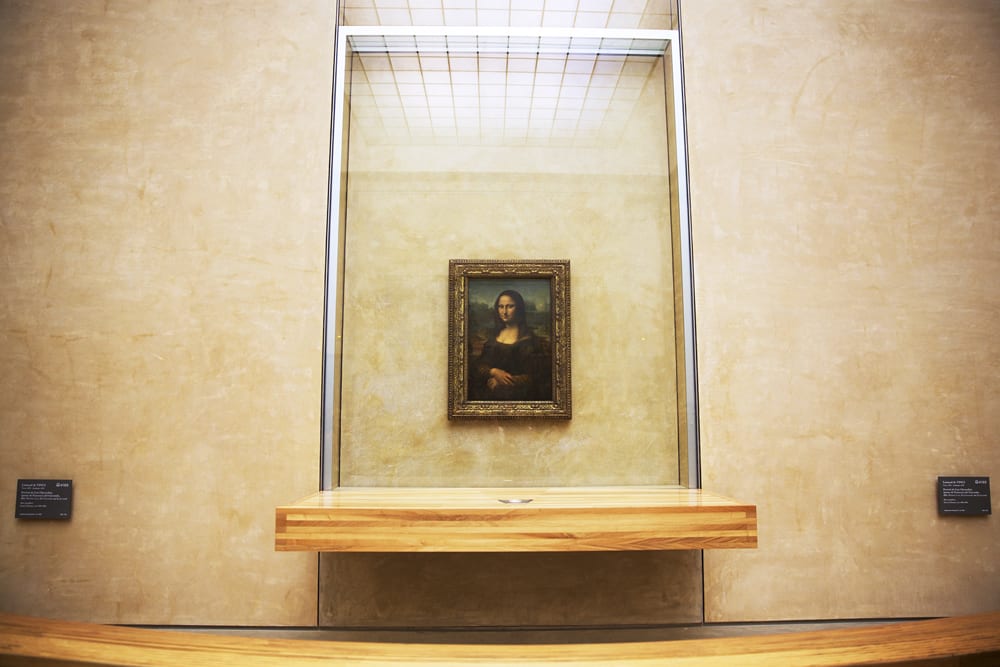
The Mona Lisa is much smaller in real life than it often appears in photos.
FAQ´s – Moving Mona Lisa
How much does it cost to visit the Louvre to see the Mona Lisa?
A standard ticket to the Louvre Museum currently costs €22 when purchased online, which is the recommended method to avoid long lines. Entry is free for visitors under 18, EU residents under 26, and on the first Friday of each month after 6 p.m. (excluding July and August). Since 20,000–30,000 people visit the Mona Lisa each day, pre-booking your ticket is essential if you want the smoothest possible experience.
What are the Louvre Museum opening times for visiting the Mona Lisa?
The Louvre is generally open 9:00 a.m. to 6:00 p.m., with extended evening hours until 9:45 p.m. on Fridays. It is closed every Tuesday. Because crowds for the Mona Lisa can be intense—especially around midday—many visitors prefer to arrive first thing in the morning or during the late-afternoon lull.
Do I need to pre-book a time slot to see the Mona Lisa?
While it’s still possible to buy tickets onsite, the Louvre strongly recommends booking a timed entry slot online in advance. Demand to see the Mona Lisa is extremely high, and pre-booking ensures entry at your selected time and helps you avoid the longest queues. Even with a ticket, expect crowds around the painting, as outlined in the article’s discussion of daily visitor numbers. You can join a guided tour which allows you to Skip-the-Line or one that gives you exclusive access to see her more peacefully in a small group at Closing Time.
Are there plans for moving Mona Lisa again?
The Mona Lisa is currently displayed in the Salle des États (Denon Wing), and though it has been temporarily relocated in the past for renovations it appears that this is her home for now! Signage throughout the museum points toward the gallery, but because it’s the Louvre’s busiest room, expect a steady flow of visitors leading you right to it.
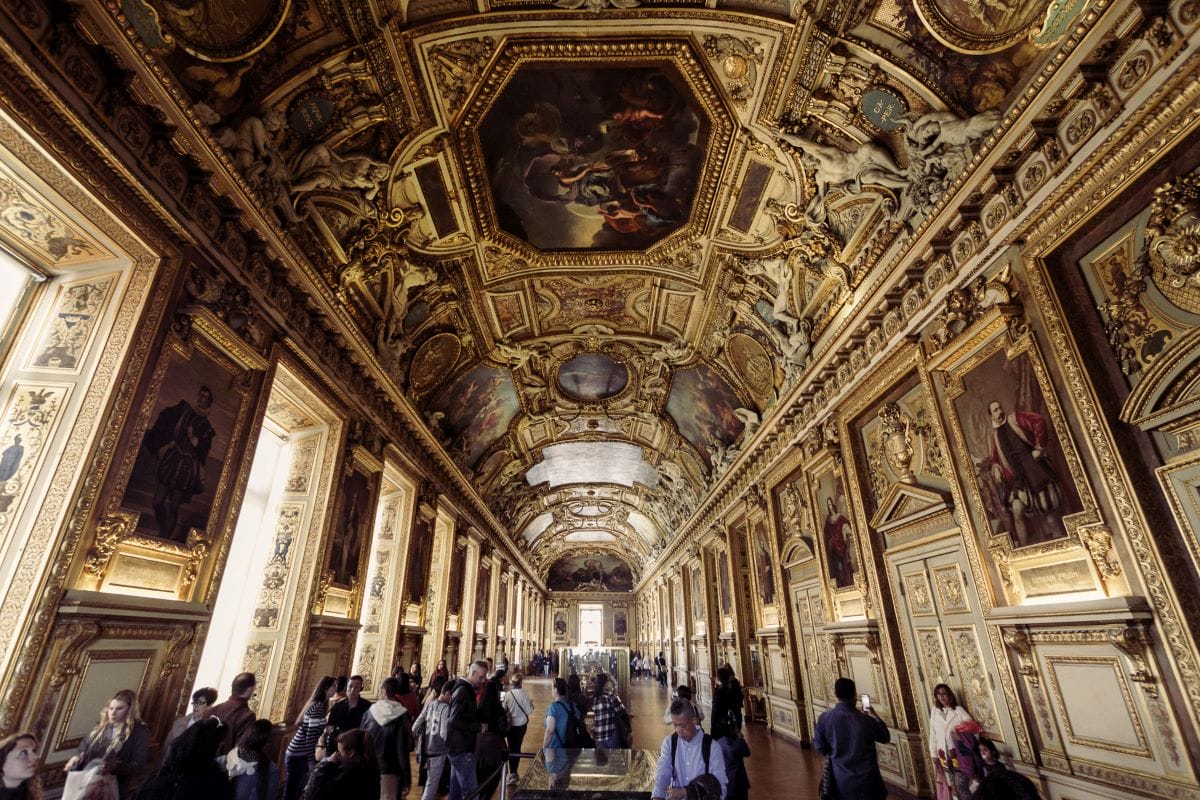
Visitors taking in the spectacular rooms while touring the famous Louvre Museum.
So, as you can see, the Louvre has continued to be the resting place of the world´s most famous portrait – and if you are visiting Paris, it is a must-see. Check out our article on the top 13 things to see at The Louvre. Or, if you want to see the best of the collection, make the most of your visit and join our Louvre Highlights Tour, featuring the aforementioned Mona Lisa, Venus de Milo and Winged Victory.
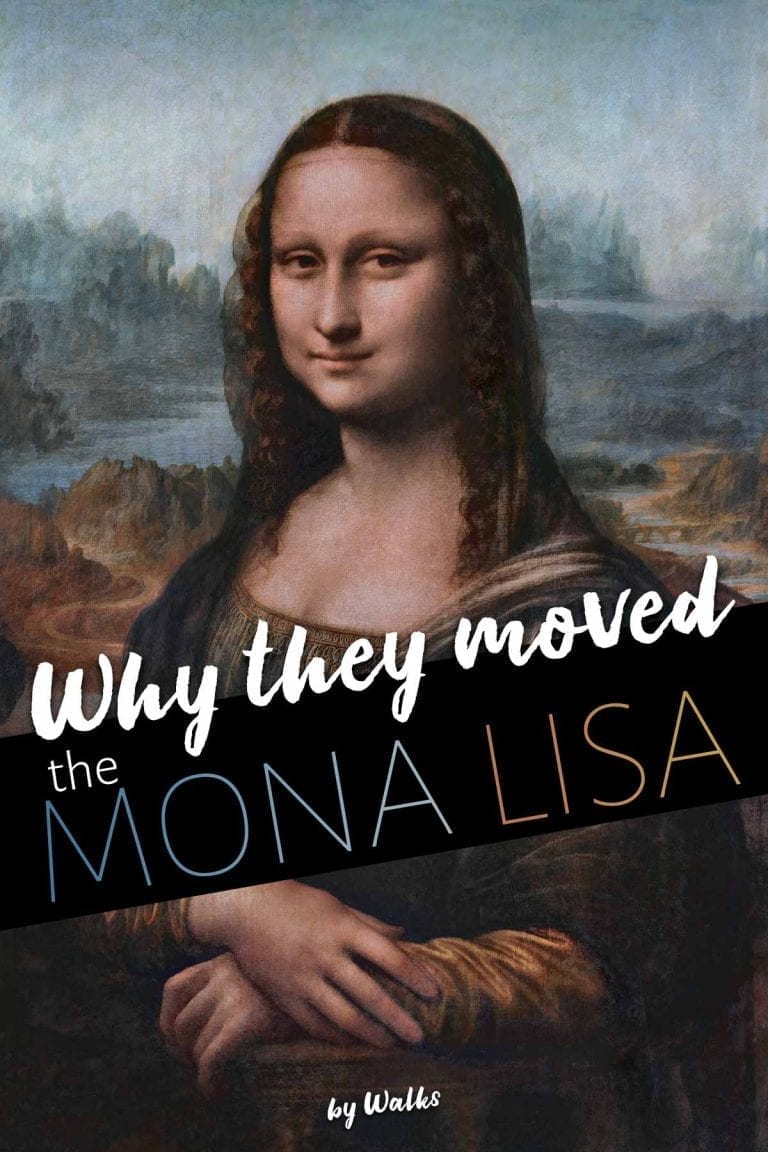
by Niamh McClelland
View more by Niamh ›Book a Tour

Pristine Sistine - The Chapel at its Best
€89
1794 reviews

Premium Colosseum Tour with Roman Forum Palatine Hill
€56
850 reviews

Pasta-Making Class: Cook, Dine Drink Wine with a Local Chef
€64
121 reviews

Crypts, Bones Catacombs: Underground Tour of Rome
€69
401 reviews

VIP Doge's Palace Secret Passages Tour
€79
18 reviews

Legendary Venice: St. Mark's Basilica, Terrace Doge's Palace
€69
286 reviews










